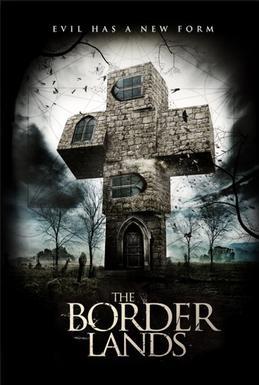Let’s begin with the title. Final Prayer was released in the United States as Borderlands. I still found it on a free streaming service under its UK title, and I’m glad I did. The movie falls under a a few different categories—cinéma vérité, found footage, and folk horror come immediately to mind. The story follows a set of three very different Vatican-sent investigators, promotors of the faith, to check out a miracle claim in Devon. I was a little confused at first, assuming this was an Anglican church, being in England. One of the investigators, Deacon, a religious brother (monk not associated with a monastery), Gray, a techie who has some basic beliefs, and Mark, a priest technically in charge. There’s tension between the men and between them and the locals. The parish priest believes God appeared during a baptism at the parish that was being filmed by a family member.

The investigators come up with plausible explanations for the “miracles” caught on tape, but they also find some phenomena that are difficult to explain. The local priest, distraught that they are disproving the “miracle,” jumps from the church tower, killing himself. Mark, taking this as an admission of guilt for a hoax, closes the investigation. Deacon, however, refuses to give up and calls in Fr. Calvino, who mentored both he and Mark. Calvino believes the church was built on pagan sacred ground and it must be purified. The ceremony, however, doesn’t end the way it was expected to. All the while, the locals are—mostly passively, but at times overtly—hostile to the team. Calvino’s revelation of the pagan background, however, makes clear that at least some of the locals haven’t given up pagan ways.
There are a number of elements worthy of commentary here. It seems likely that a longer piece will be necessary to cover much of it. A discussion in the local pub between Deacon and Gray, before calling in Calvino, raises the central question. Gray, as a layman, suggests that pagans had to be worshipping something they believed was real before Christians came along. He wonders if intruders (Christians, in this case) were unwelcome by this earlier deity. Deacon, who is skeptical, but who’s come to believe that a former priest was involved in pagan worship, resists such thinking. The ending makes clear what’s been going on, but getting to that point does involve quite a lot of religious discussion. Horror and religion go naturally together, as I often opine, and this is a particularly good example of their common labor.
